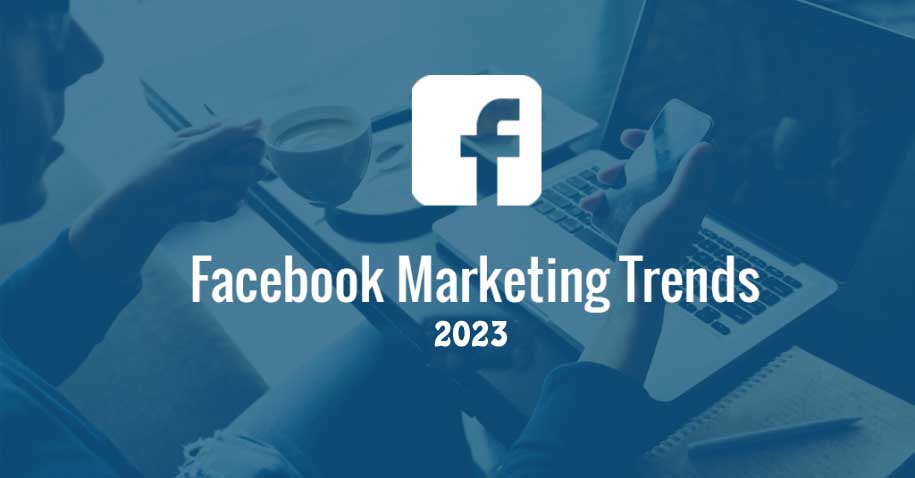If you stand still in social, you are going in reverse.
With this in mind, new features are consistently added to Facebook. Taking a glance at late changes gives us enormous ways to deal with what 2023 will hold for both consumers and organizations.
In the course of the last couple of years, Facebook has built out the user experience so that customers can get access to a wide assortment of content without leaving the site. A large part of our Facebook expectations alludes to this pattern somehow.
As the network keeps on building an ecosystem separate from Google and whatever remains of the web, marketers may have received their techniques to guarantee their content is as yet reaching its audiences.

Without worthy fans, your Facebook marketing efforts can fizzle out quickly.
Roll up your sleeves. We’re going to dig deep.
The Rise of Facebook Search Marketing
Facebook recently introduced Search FYI, an upgraded search tool that customizes results by including the ebb and flow of news stories and prominent posts in the results. For brands, this will mean creating content that maintains an equilibrium between shareability and SEO optimization. For the pursuit to work, content must present signposts so the algorithm can make sense of it. However, Facebook search has distinctive standards to Google search. Facebook will return famous stories where a much measure of discussion, which means content still, needs a social, shareable side to it to stand a shot of ranking. This persuades that social media SEO’s best practice will turn into a concern for marketers in 2023. Finding the right balance between SEO and social may prompt another new dawn of SEO on social media.
Content publishing on Facebook
Facebook is endeavoring instant articles to attempt to keep people on-site when getting to the content. Publishers can create interactive articles on Facebook that load right away, without users leaving the application. The content is better off and speedier than when seen on a mobile browser; however, it raises issues for marketers. If articles are to be posted directly on Facebook, the content doesn’t access leads the user to the publisher’s website. The publisher is not benefited from any banner advertising on their site when the traffic reduces.
This impact will be increased if consumers won’t have to leave Facebook to make a buy. Facebook’s joint venture with the e-business platform Shopify will let them do that transaction without leaving the site. Brands should consider whether the worth of publishing straight to Facebook exceeds the loss of direct traffic and advertising revenue.
Advertising through Messenger
Currently just accessible in the US, Business on Messenger permits brands to enhance their customer service offering by having personal, real-time discussions. Shipping status and order affirmations can be conveyed to the consumer easily. The platform also permits push notifications, letting a user be informed when an item comes back in stock, for instance. 2016 ought to see this trait take off to different markets, and for components to be redesigned. We can visualize brands sending focused adverts to users through the stage, as LinkedIn permits, and after that having the capacity to answer any later inquiries the customer may have.
Virtual Assistant
Facebook recently introduced M, a virtual assistant to rival, Apple’s Siri; Microsoft’s Cortana; and Google’s Google Now. Instead of depending exclusively on artificial intelligence, M utilizes a blend of AI and human mental ability to convey a service that can conclude tasks for you, as opposed to just discovering data. Users can book tickets, purchase items and get suggestions without leaving Messenger. However, how do brands guarantee they are prescribed over their rivals?
The software is present in the beginning stage and accordingly just open to a predetermined number of users. Early reports show Musing comparison and peer review sites to offer recommendations, highlighting the significance of these sites and the need to engage with reviews. Later on, we could see Facebook depending on its own data to figure out whether a brand is dependable or not.
Live video streaming
August saw the introduction of Facebook Live, allowing public figures to broadcast live videos to watching fans. This is Facebook’s response to Meerkat and Periscope, which both allows broadcasting live video streams. Brands have discovered different approaches to bristle the force of live streaming on Periscope. It would be a surprise if Facebook did not let the same on Live. Offering a variety of media for brands to capitalize on is in the site’s best interests, and Live could see some exciting uses by inventive brands.
A family of Facebook apps
Facebook is progressively moving far from one fundamental application to convey a suite of specific alternatives. Facebook launched Notify; a notification app that will amass stories from diverse sources and pushes them specifically onto a user’s lock screen. The successful demonstration of Facebook might enhance its usefulness with a more extensive decision of providers. Possibly this could include brands, who could push content straightforwardly onto mobile phones, informing users of extraordinary offers or product launches. One of the issues with charming users along these lines is striking the right balance to avoid notification fatigue. If users get an excessive number of notifications they will unsubscribe from that feed, or uninstall the application completely.
Facebook as a data provider
The bulk of Facebook data has long been unreachable to marketers. Beyond their own page, brands have little idea of the conversation about them. The changes are set with synonymies data immediately providing insights to advertisers via a new API called PYLON. This data illustrates the conversation around events, brands, topics, and activities, and the data has more than 60 different attributes while securing the identity of the individual user. This will build the information accessible to marketers, adding to the abundance of data social media analytics platforms like a Brand watch now offer. This ought to make adverts on Facebook more focused on, yet will likewise give further bits of knowledge to users of social insight.
What’s your strategy to stand out from the crowd in 2023?
Now it’s your turn! Applying these seven trends will help you deal with the many levels of Facebook marketing. If you’ve already experienced any of these trends or planning to do so in the near future, leave a comment in the box below and let us know the new trends we missed in this blog.





